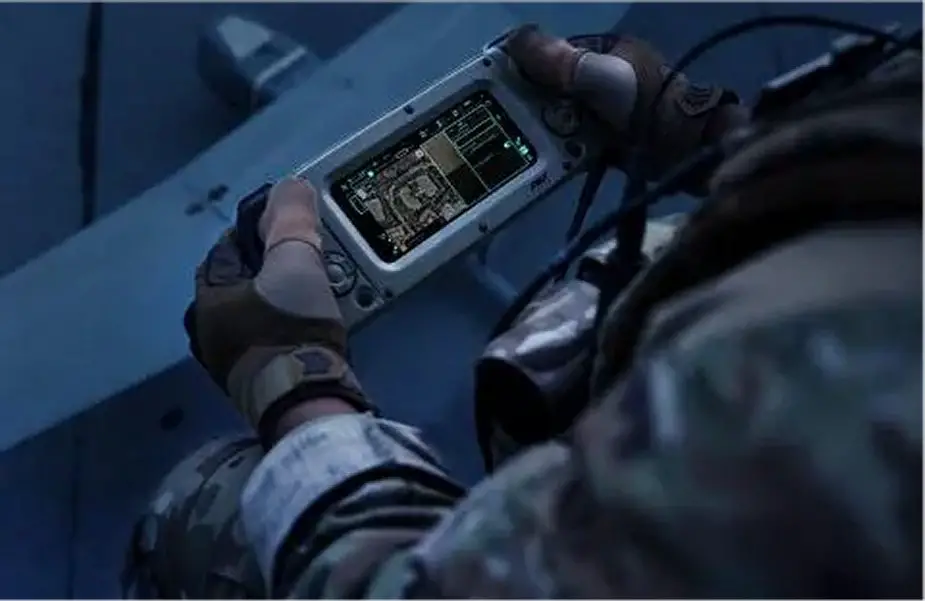According to a press release published by AeroVironment, Inc. on July 7, 2021, the global leader in intelligent, multi-domain robotic systems, today introduced Crysalis™, the company’s next-generation ground control solution. Crysalis is an integrated hardware and software-based ground control system (GCS) that provides command and control of compatible AeroVironment unmanned aircraft systems (UAS) and their payloads, through an intuitive user experience (UX).
Follow Air Recognition on Google News at this link
 New ground control solution Crysalis (Picture source: AeroVironment)
New ground control solution Crysalis (Picture source: AeroVironment)
Built around three core elements – software, hardware, and antennas – Crysalis was designed to make operating robotic systems easier than ever before. Crysalis offers complete interchangeability, either as modular elements or turnkey systems, both adaptable to meet specific mission requirements. Crysalis is cross-platform compatible with Android, Microsoft Windows and Linux operating systems. The new GCS is available in multiple configurations ranging from lightweight and wearable to mobile and command center systems that are modular and scalable.
Crysalis was designed with the operator in mind, featuring an intuitive user interface (UI) to reduce cognitive load and training burden while enhancing situational awareness and battlefield collaboration. Through the easy-to-use Crysalis Control app, users can plan and execute flight missions as well as navigate and control UAS assets and payloads with one-click access to critical information, modes and telemetry meta data.
Additional operational participants can gain enhanced situational awareness, share information and collaborate on tactical decisions by accessing telemetry and downlink data through remote video terminals, while also allowing them to capture data directly on their devices. Crysalis standardizes the user experience across all AeroVironment small UAS platforms, simplifying the training requirements and operation of Puma™, Raven® and Wasp®.
The Crysalis GCS is available in scalable hardware configurations with all necessary software components pre-configured for quick mission deployment. These range from the Crysalis Ultralight GCS that provides full control of UAS and payloads through virtual control or tactile joysticks on a wearable smartphone configuration to Crysalis Command GCS – a command center configuration featuring a ruggedized laptop.
Every Crysalis GCS configuration is natively compatible with AeroVironment’s Digital Data Link™ (DDL™) radios and antennas, is designed for plug-and-play compatibility with Nett Warrior and can integrate with both third party command and control and battlefield management applications.
The term unmanned aircraft system (UAS) was adopted by the United States Department of Defense (DoD) and the United States Federal Aviation Administration (FAA) in 2005 according to their Unmanned Aircraft System Roadmap 2005–2030.
The International Civil Aviation Organization (ICAO) and the British Civil Aviation Authority adopted this term, also used in the European Union's Single-European-Sky (SES) Air-Traffic-Management (ATM) Research (SESAR Joint Undertaking) roadmap for 2020.
This term emphasizes the importance of elements other than the aircraft. It includes elements such as ground control stations, data links and other support equipment. A similar term is an unmanned-aircraft vehicle system (UAVS), remotely piloted aerial vehicle (RPAV), remotely piloted aircraft system (RPAS).
Ground Control Stations (GCS) are sets of ground-based hardware and software that allow UAV operators to communicate with and control a drone and its payloads, either by setting parameters for autonomous operation or by allowing direct control of the UAV.
















